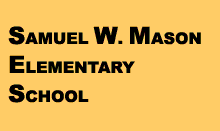 "This school's professional development began with the inclusion children." Before a new principal arrived in 1990, the Boston School District was ready to shut Samuel W. Mason Elementary School down and lock the doors. Of the 79 elementary schools in the district, parents chose "The Mason," as it is called, dead last. "With that sense of urgency," former principal Mary Russo explains, "we had to take a tough look at our school." The school's Roxbury neighborhood was itself a tough one, but that wasn't going to change. What had to change was that reading scores were in the lowest quartile in the district and that teachers were operating in total isolation. Starting essentially from scratch, the school community needed a vision for the school. Parents were asked, "What kind of school do you want your kids to go to?" Teachers were asked, "What kind of school would you want your kids to go to? And the kids were asked, "What would a good school look like to you?" The next question was how to provide the resources to make the changes everyone agreed were needed. One key decision was to become a total inclusion school. This meant the special education teachers and paraprofessionals would be resources for the whole school. Classroom teachers would absorb the special education students, but there would be more teachers to go around. (The school later became a professional development site for the special education program at Wheelock College, with Wheelock students augmenting the school's contingent of paraprofessionals.) Total inclusion also made it dramatically clear that the whole school would have to think about educating children in a different way. In one teacher's opinion, "This school's professional development began with the inclusion children. To have special needs kids in your class, to have a diverse range of achievement levels in your room, you have to be a more careful observer, and you have to be a better problem solver about your methods." Another teacher concurs: "I've been teaching for 32 years, and education has changed so much. In the past if Johnny didn't learn it was Johnny's problem. But now, if he didn't learn, there's something you're not doing. I think special education has done a lot to clarify our views on education in general – it's up to us to find optimal conditions for a child to learn." This change in attitude about responsibility for children's learning was reinforced through the school's decisions to become one of the Boston district's first school-based management sites and to join the Accelerated Schools Network. The district provided a "change coach" and Accelerated Schools delivered the message that not only can all children learn, but children who are behind can learn enough to catch up. The Mason also needed to find a literacy program that would pull everyone together. "It was always isolated pockets for years," one teacher explains. "There was no syllabus, no dialogue about when to teach what, no common language or goals." After investigating and visiting various programs,the School-Based Management Team recommended Early Literacy Learning Initiative (ELLI). Parents and faculty then took a hard look at it, finally agreeing to implement it. Teachers credit much of their learning to ELLI and the fact that a Mason teacher is an on-site, half-time demonstration teacher and coach in the program. Teachers are also free to visit and coach each other since the school's paraprofessionals, student teachers, and parent volunteers can step in to cover for them. "We have the mentality that you learn from seeing others," reports one teacher. "If someone says they tried something and it went really well, we'll all say, ‘Can we see it?'" Under new principal Jane Palmer Owens, many professional development activities at The Mason are built into the school day. Classes don't start until 9:20, which means that some kind of professional development is going on every morning in the building. Grade-level teams meet weekly. Other teams meet with a focus on literacy or math or site-based management. And a Student Support Team meets twice a month to keep close track of kids who are having trouble or could benefit from special services. In addition to the schoolwide goals for professional development, teachers have personal goals that they discuss twice a year with the principal. The Mason teachers now average 50 hours of professional development each, up from 6 hours in 1991. As for student learning, the fact that all professional development is tightly aligned with student assessments has paid off. Twice a month, grade-level teams meet to go over student work. Three times a year, teachers formally assess their students and make presentations to the faculty and parents. And, of course, there are the standardized tests required by the district. On recent tests of reading, math, and writing, The Mason students outperformed the district average in every case, posting gains that have made their school one of the 12 most desirable in Boston, as determined by the parents who vote every day to send their children there. |
Grades K-5 Number of Students 300 Student Ethnicity 71% African American 14% White 11% Latino 2% Asian 2% Native American English Language Learners 23% Free/Reduced Lunch 74% Special Needs 26% Measures of Success doubled enrollment went from 79th almost doubled
150 Norfolk Avenue Roxbury, MA 02119 617-635-8405
|
WestEd
WestEd Home | Search | Feedback
About WestEd | Our Work | Resources | What's New
This information can be found at
http://
Last modified
©
WestEd® | (415) 565-3000 | www.WestEd.org